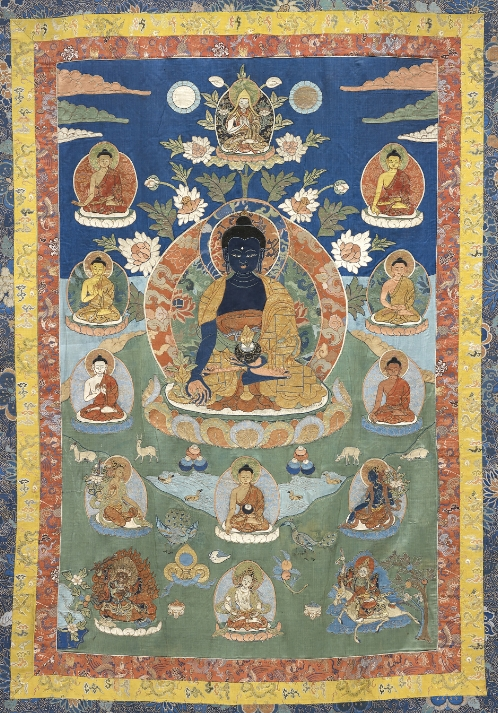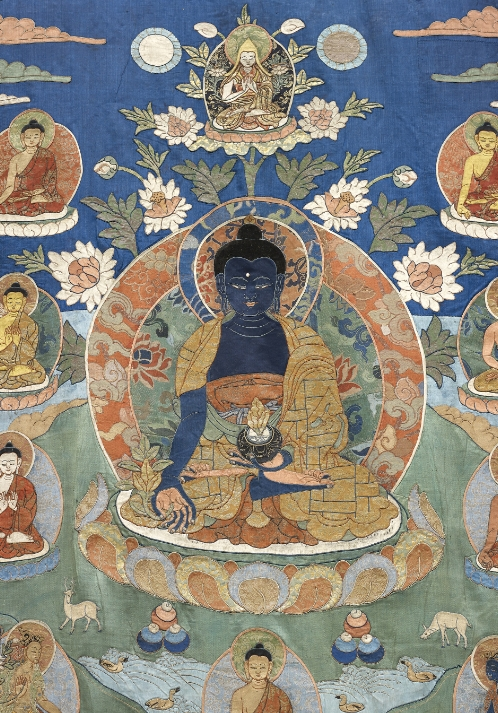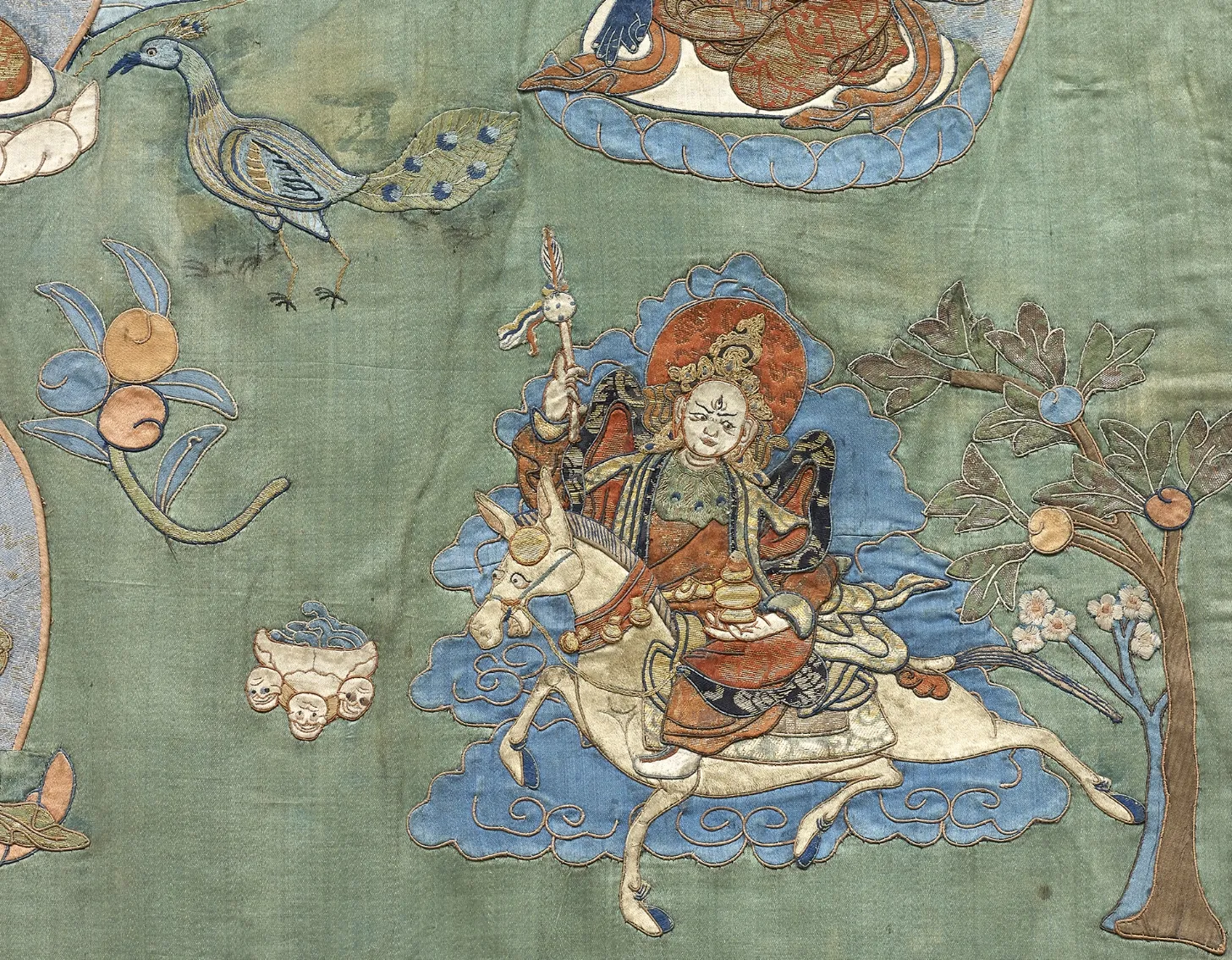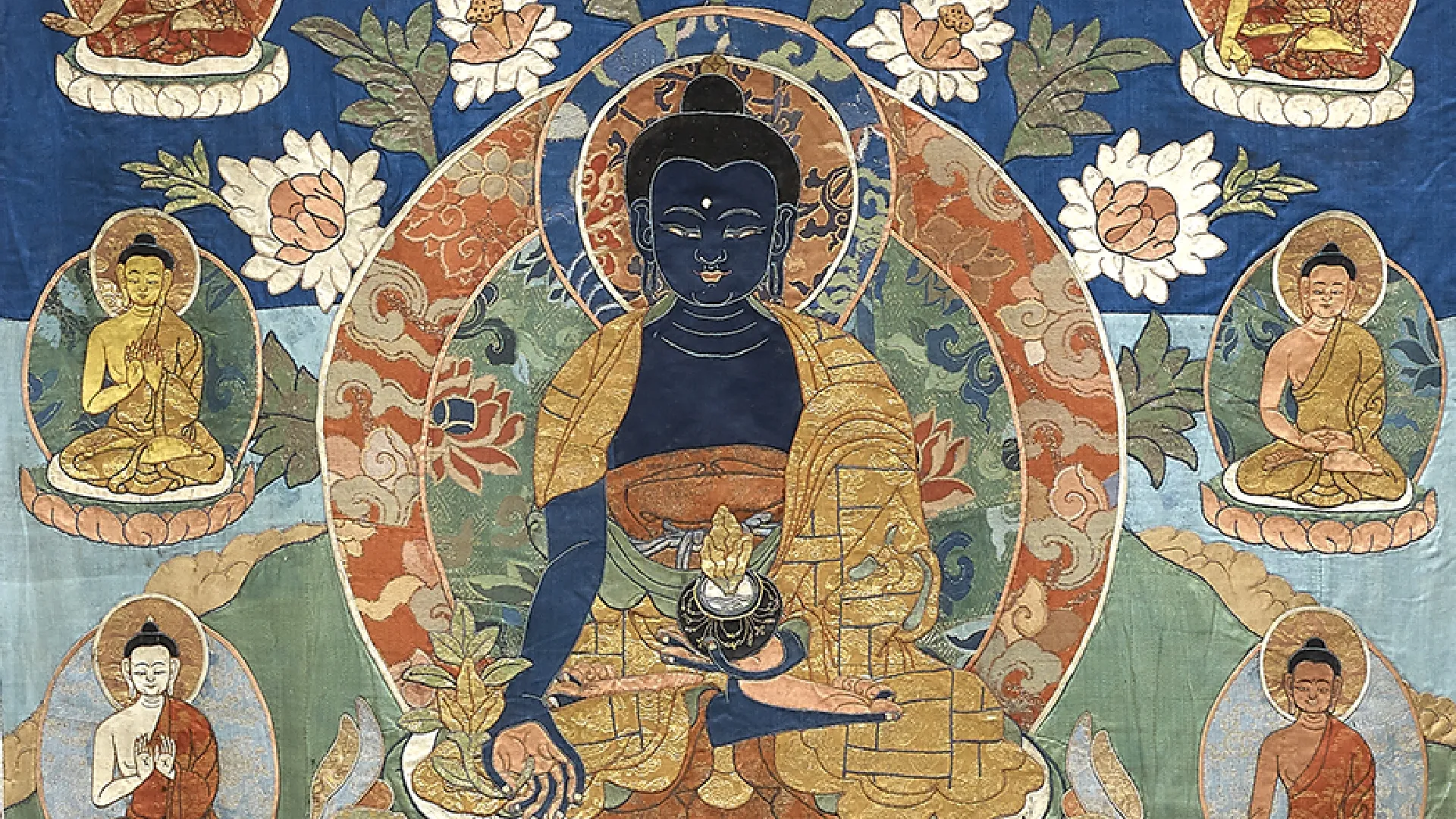With silks: 270 x 140 cm
Tibetan physicians derive their healing powers from Bhaishajyaguru, the Buddha of Medicine, who is celebrated in a very fine appliqué banner in the ollection (cat. no. 22). Physical and mental well-being are also prerequisites to the demands of meditation and related Buddhist practices. Moreover, it was encounters with illness, old age, and death that awakened the young Shakyamuni to his quest for enlightenment and freedom from the endless cycle of birth, death, and rebirth.
A Buddha specifically associated with healing, Bhaishajyaguru, arose in India in the early centuries CE. He is blue, like the gemstone lapis lazuli, and he holds a begging bowl filled with myrobalan, a potent medicinal plant. By the seventh century, Bhaishajyaguru worship included a large mandala of deities. Chanting his name or associated sacred sounds (dharani) is said to cause physical and mental ailments to disappear. Medicine was one of the five sciences (pancavidya) taught in the monastic universities of India. Tibetans inherited this tradition, as well as others from Greco-Arab and Chinese sources.


Tibetans excelled in the arts of textile appliqué (gos sku), whereby pieces of cut cloth are assembled and sewn in place to create a complex tableau resembling a painted picture. The 19th century example in figure (cat. no. 22.1) demonstrates the refinement possible when this technique is employed by a skilled master. Working with well-chosen silks and silk damask fabrics, and with embroidery, couched threads, and couched gold threads, the composition springs to life. At the center is the Buddha of Medicine in the company of his entourage of seven Buddha brothers, the bodhisattvas Manjusri and Vajrapani, a goddess, and two protector deities. Above him is the great Tibetan Buddhist reformer Tsong Khapa (1357-1419), whose teachings and wisdom drew deeply from the most exalted Indian traditions.
Comparable examples exist in a variety of private and public collections, including the Newark Museum. Appliqué technique was sometimes used to create exceedingly large banners that were displayed against the side of a steep hill or the wall of a monastery, to be seen in ceremonial public gatherings. At Gyantse, banners over twenty meters in height were displayed as recently as 2000. For such purposes, the inevitably sturdier banner in appliqué cloth was preferred over its more fragile, painted counterpart.

